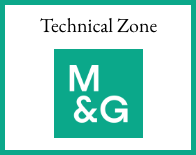A common question asked of compliance consultancy ATEB Consulting. Director Steve Bailey provides some guidance.
ATEB has worked with many firms over the past few years in relation to defined benefit pension transfer advice. This is due in part to the significant increase in pension transfer activity following the ‘freedoms’ that came in with the Pensions Act 2015 and in part due to the deluge of rule changes introduced by the FCA arising from its continued scrutiny of firms involved in this market and its conclusion that many clients have received an unsuitable recommendation to transfer.
In the course of our work in this area, we see a large number of pension transfer suitability reports. It is fair to say that these can be of ‘variable’ quality. This matters because the suitability report is where all the adviser’s analysis and conclusions should be brought together and communicated in a way that enables the client to understand the recommendation and make a decision that is clearly based on complete, accurate and fairly presented information.
We are sometimes asked this question …
What does a good DB report look like?
Obviously there is no single ‘right’ answer to the question. Firms will have their own ideas of structure and content and individual advisers often apply their own style and wordings too. There is nothing wrong with having a general structure around which advisers and paraplanners can work, indeed we would recommend that firms do have an accepted structure for suitability reports as that drives a degree of consistency, which is desirable. But on top of a good structure, each report must be as personalised to the client as possible. That means more than simply slotting in the specific ceding scheme name and details to an otherwise standard report. The report should truly refer to the specific client’s situation, and identify and address the specific client’s objectives.
And it should go without saying that the report should follow on logically from a good fact find, risk profiling and analysis process. There should never be any ‘fact’ stated in the suitability report that is not also recorded in the fact finding notes. Any conflicting (or missing) facts or objectives should be fully resolved and documented long before the suitability report is created.
So, while there can be no one best way to created a good DB report, we have summarised what we believe the key elements should be below.
- One page summary
It is mandatory to include the one page summary at the start of the report. There is a prescribed format, which can be found in Annex 2 of PS20/06. The format includes a minus sign in front of all charges. Some people think this looks odd, but it is deliberate and so should be included. The format to use depends on whether the client:- has an available workplace pension
- does not have an available workplace pension
- is receiving abridged advice
- Introduction to report
A bit about the firm and the scope of the report. How did the client contact arise etc. We believe that it is prudent to include appropriate warning text about transferring that reflects the FCA starting point on DB advice - Objectives and priorities
This is a really important part of any suitability report and one that is often weak. First, the objectives should be clearly personalised to the client situation and should be readily identifiable as actually coming from a discussion with the client. All too often, we see what we call adviser led or product led objectives. These are often merely features of a drawdown plan. For example, “… you wanted to be able to access cash at 55”. That is not an objective unless it is clear that the client actually INTENDS to access cash at 55. Similarly, ‘reviewing your pension’ is not an objective, it is merely part of a process by which a real objective might be addressed. If the objective does not sound as though the client said it, (s)he probably didn’t!
A common problem with DB advice is that the matter is immediately pigeon holed as advice on a pension transfer. This can discourage desirable lateral thinking on other ways to address the client’s objectives. Going back to the ‘access cash at 55’ example, if that is genuinely what the client’s objective is, then consideration should be given to the myriad of other ways of accessing a cash sum WITHOUT the need to transfer, for example borrowing or using other assets. The objective is to raise cash – transferring the pension is but one possible way of achieving that. - Attitude to investment risk
We shouldn’t need to say much about this as all firms should have a sound process for assessing the client’s ATR. The report should confirm the assessed ATR and ideally include a description of what that means. - Knowledge and experience
Similarly, firms should have a clear process for assessing this. But it should be based around specific questions about the client’s experience of investing and understanding of key aspects like the concept of risk and reward, rather then being merely a self assessment score. Confirm the outcome in the report. - Capacity for loss
This is the aspect of risk profiling that, in our experience many firms do not do robustly. We have written at length on this before – see here. Once a robust assessment of the client’s CFL has been done, confirm the method used to assess it and what it means in the report. Ideally, the report will refer to projections or cash flow models that support the assessment.
However, a word of caution on cash flow models. We often see pages of colourful charts and figures in reports. Used wisely and, crucially, explained clearly, these can play a part in supporting the recommendation. But they are often over used or badly presented without adequate explanation to the point where they serve to confuse rather than clarify. And remember there are specific rules around how cash flow models can be used in connection with advice on pension transfers, including acceptable growth assumptions. - Attitude to Transfer Risk
This aspect should be covered in the report, specifically how the assessed attitude plays in relation to the recommendation to transfer or retain the scheme benefit. This is often poorly assessed if at all and so cannot play a positive role in the report. Read here for more information. - Overview of existing situation and details of client’s scheme benefits
Set the scene on the existing situation. It is a matter of style how much detail you go into. Some detail of the key benefits is appropriate but repeating every number and comma from the CETV statement is unnecessary and time wasting. - Financial implications of transferring
The financial implications of transferring are embodied within the TVC and critical yield figures (the latter being optional but still helpful in ensuring the client understands the ‘cost’ of transferring. If you extract the TVC chart to your report, make sure you also extract the accompanying notes as these are a mandatory part of the chart.
However, the most important thing to include in the report is a clear and balanced explanation of what the TVC and yield figures actually mean for that client. - Recommendation
The whole point of a suitability report is to document a personal recommendation. That may seem an obvious statement but it is worth pointing out that the transfer rules require that a recommendation is actually made (full advice) to transfer or not. The recommendation should be unconditional. You cannot say, “If you are happy taking the risk then you should transfer.” The point of the personal recommendation is to give the adviser’s (hopefully carefully analysed and argued) opinion on the suitable course of action, taking into account all of the client information, including how comfortable the client is with taking risk / losing the scheme ‘guarantees’. - Reasons for my recommendations
Reasons for the recommendation to transfer or not, and the selection of the intended destination plan and investments if a transfer is recommended. The reasons should be client specific not just a list of generic reasons. They should also pair up to some degree with the client’s objectives. - Potential risks and disadvantages
It is a requirement of all suitability reports that any risks and disadvantages are disclosed. Again, these should be personalised to the situation in hand not just a few pages in the appendix with a ‘standard’ list of risks. - Discounted alternatives (this section might sit best BEFORE the recommendation)
It is not a requirement in non transfer advice to list all the things that are not being recommended. However, we believe that all potentially viable alternatives to transferring should be identified in the report along with the reasons they were discounted. There are usually several alternatives, including, partial transfer, deferring transfer, using other assets, borrowing, life cover etc. This list is long and each viable option warrants proper consideration not just lip service standard wording along the lines of “you did not want to borrow” or “you did not want to take out life insurance”. There are occasions where these alternatives are absolutely the most suitable way to proceed and the client’s preference for transfer needs to be challenged and explained. - Workplace pension (again, this section might sit best BEFORE the recommendation)
One option that should always be addressed is whether the client has an available workplace pension as it is a requirement to use this unless an alternative destination plan can be shown to be MORE suitable. - Any other matters that are to be included
As appropriate. - Costs and next steps
Include details of the costs involved including adviser charges, reviews to be provided, next steps etc.
Our view
The suitability report is a key part of the advice process. And it is also a key element in meeting the requirement to ensure that the client understands the recommendation (COBS 19.1.1.C) and keep a record of what that assessment of understanding was based on. (COBS 19.1.9A). It’s important to get it right.






























